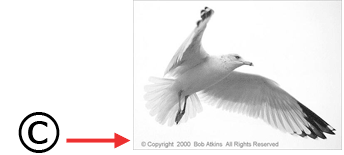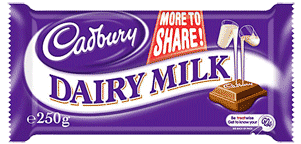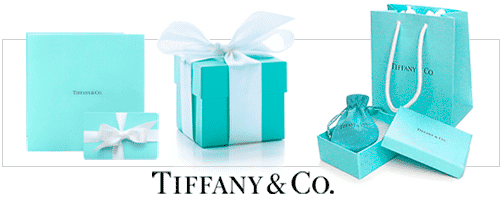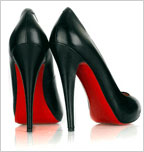Color Branding & Trademark Rights
The color of a brand is different from a color trademark. Even though a TM or ® symbol may appear on a brand's image, it does not mean there are any legal rights to the color or colors.
The TM and ® marks on the Mc Donald's and Starbucks images below means that the company has claimed rights to the image (the symbol or word or combination of both).

You can use TM on any design that you wish to designate as a trademark. The use of the symbol may be governed by local, state, or foreign laws and the laws of a pertinent jurisdiction No registration is required in the US. In most states this will actually give you some "common law" trademark rights.
You can use the ® mark in the U.S. only after you obtain a federal trademark registration from the US Patent and Trademark Office.

Copyright (the © mark) is different. It means that the original author or creator of any creative work (writing, images, music, software, etc. etc.) has the sole right to copy (distribute, publish, sell, copy) that work for a set period of time unless he or she explicitly hands over that right to someone else. Most governments enact this law.
Another example is the Color Matters website. All the articles and images in this web site are protected by copyright.
What is protected when a brand image is registered or has a trademark symbol?

The ® (REGISTERED) mark in these examples protects the brand image - not the color or color combination. In other words, you can use the same yellow and red colors as McDonald's for your business. However, if you used the same design - the yellow arch on a red background - with your business name, you'd be in trouble and even more so if it's for a hamburger restaurant.
The TM (TRADEMARK) symbol on a brand image means the same thing. It protects the design and does not give legal rights to the colors alone.
About Color Trademarks
A color trademark is different. In this case, the color is the brand. The use of the color in a market sector is protected by trademark. For example, when you see chocolate candy in a purple wrapper, you know it's Cadbury: when you see a turquoise box for jewelry, you know it's from Tiffany & Co.

However, Cadbury's purple is protected by trademark only for chocolate products. Anyone else can use the color purple. For example, Royal Motor Oil and Nexium (pills) use purple in their brand.
Until the 1980s, U.S. law refused to recognize a single color as a brand. However, color combinations, had long been protectable. This changed when Owens-Corning launched the "Think Pink" campaign for its fiberglass building insulation. In 1985, a U.S. Court of Appeals in Washington ruled that the company had the right to prevent others from using pink for insulation.
Years later, in another case, the U.S. Supreme Court reiterated that a single color can indeed be a brand, so long as the public strongly associates the color and the specific product and that the color is in no way functional.

Pink insulation is a good example of a color that is protected by trademark. When consumers see pink insulation products, they know it's Owens-Corning. The color pink doesn't symbolize anything in home construction. In fact, it's not even a very masculine color.
Trademarks Today
Color trademarks apply to unique situations because it's not possible to permit every business to own "their color" today. Otherwise there would be "color depletion." In other words, there are a limited number of colors.

Tiffany Blue is another example of a color trademark. It's important to understand that they only own that blue in situations where it could be confused with their products. Tiffany only owns "robin's egg blue" for its boxes and bags.
You can paint your house that color, for example, without having a problem. Given the wide range of products Tiffany sells, and the uniqueness of their shade of blue, they are protected from other jewelers who would use the same color for boxes or packaging. Otherwise, there would be brand confusion.
A number of companies have failed to protect single colors. Pepto-Bismol couldn't get pink and Good Humor failed to protect the color white for its trucks and uniforms. On the other hand, UPS has protected brown for its trucks and uniforms and 3M "canary yellow" for its adhesive notes.
What colors cannot be trademarked?
One of the basic principles of color trademark laws in the US is that a functional color cannot be trademarked. In other words, if a company makes lawn mowers, they can't "own" green because green is the color of lawns and is therefore a functional color.
Does John Deere Own Green?

Contrary to the color myths, John Deere does not own green. They have trademark protection for the image of the deer on a yellow background but not the colors per se. Competitors are allowed to paint their equipment green or use green in their brand design because green is a functional color. It symbolizes vegetation – grass, fields, farmlands, etc. – and that's where you would use a John Deere tractor or any other Deere product.
On the other hand, Qualitex registered the color green as a trademark for their dry-cleaning pads. In this case, green was a "secondary" color. It The idea is that if you use a color in such a way that your brand is totally identified with it – and there is no functional implications, then perhaps you should have the right to trademark the use of that specific color in that specific market.
(More trademark color myth: Barbie does not own pink; Mattel does not owns G.I. Joe green.)
Color War: Louboutin Shoes and Red Soles

The issue of color rights surfaced in a recent dispute between two well-known design houses — Christian Louboutin and Yves Saint Laurent. Louboutin has used a red lacquered outsole on its highly priced women's shoes since 1992 and is suing for trademark protection. In the meantime, the trend is growing fast enough to make paint sales spike.
What do you think? Is imitation flattery, infringement, or just trend following?)
| This article was written by Jill Morton and is based on her experiences as an expert witness in several recent color trademark lawsuits. For more information, visit the Colorcom website. |
Links to other articles on this topic:
Color Matters Blog - Color Infringement: Microsoft vs. Google - 2009
Also from Color Matters
Learn online.
A downloadable eBook




